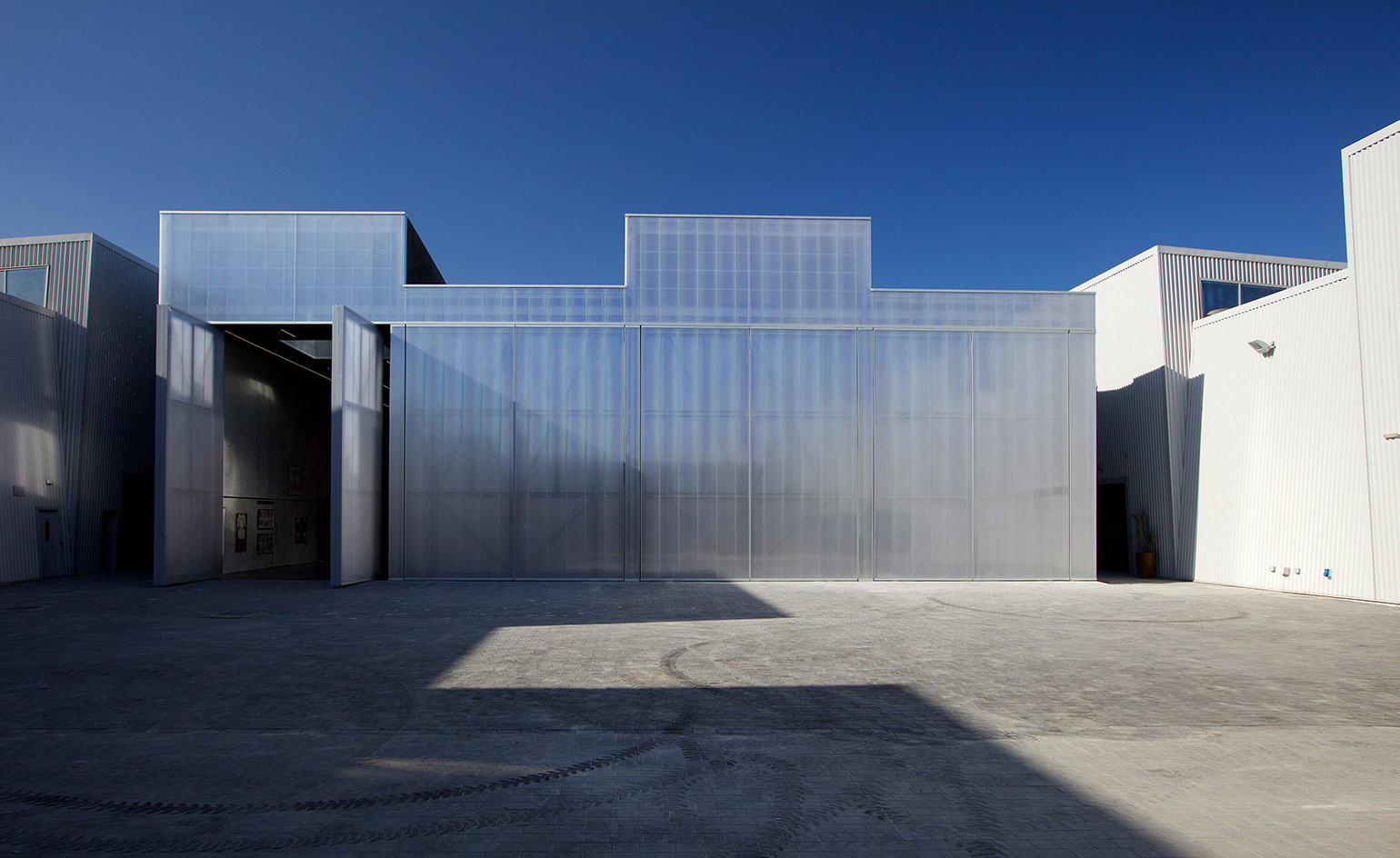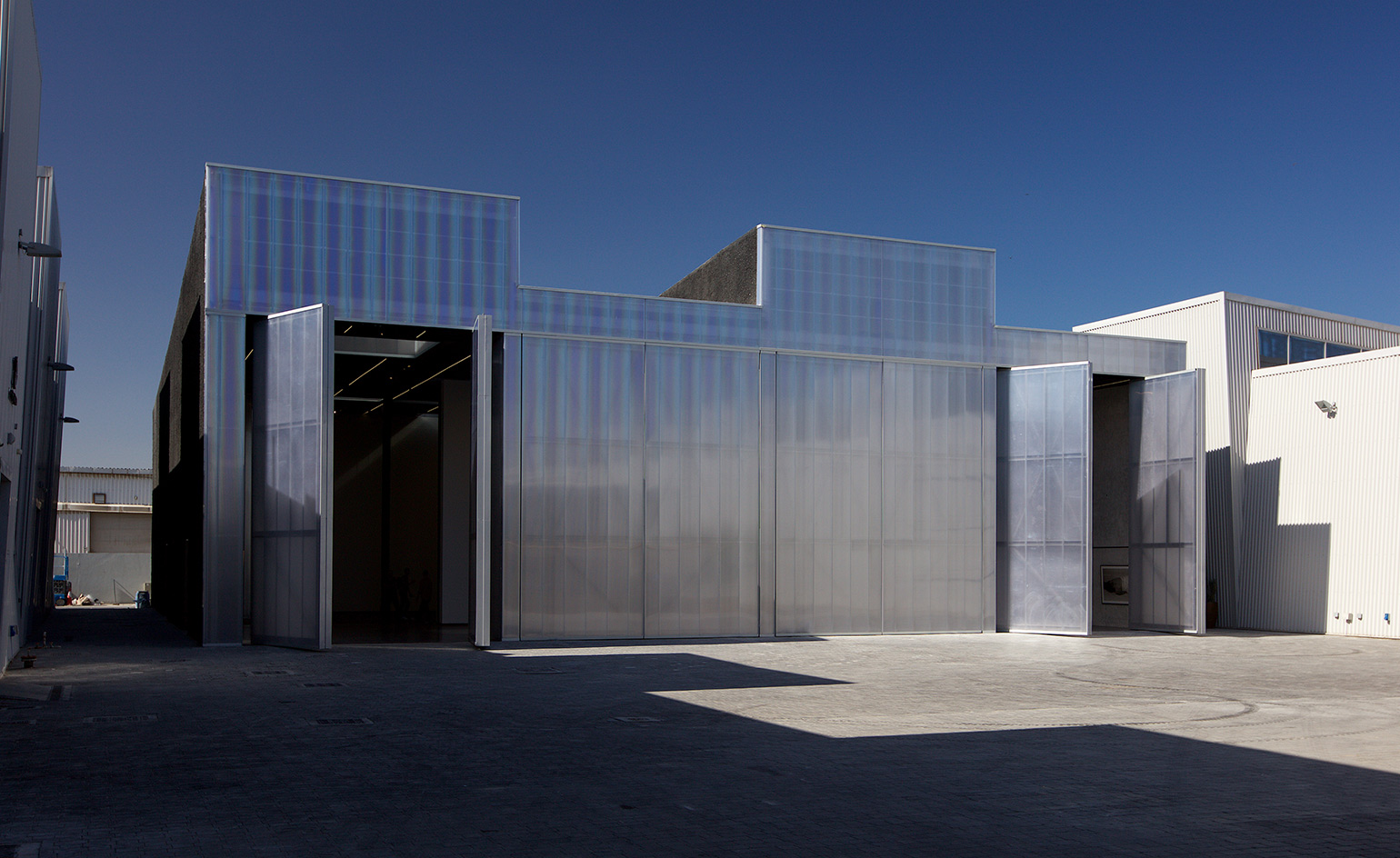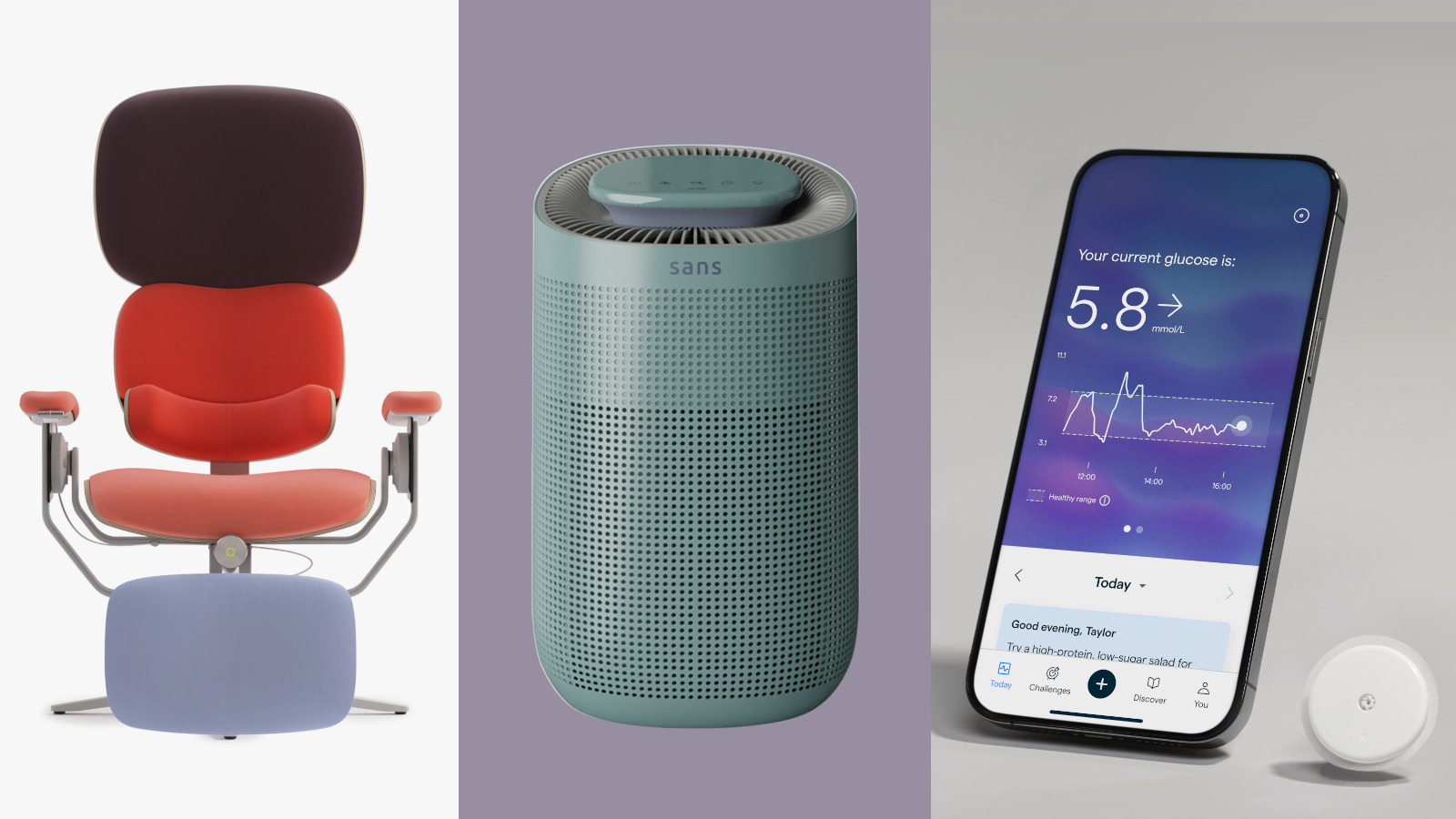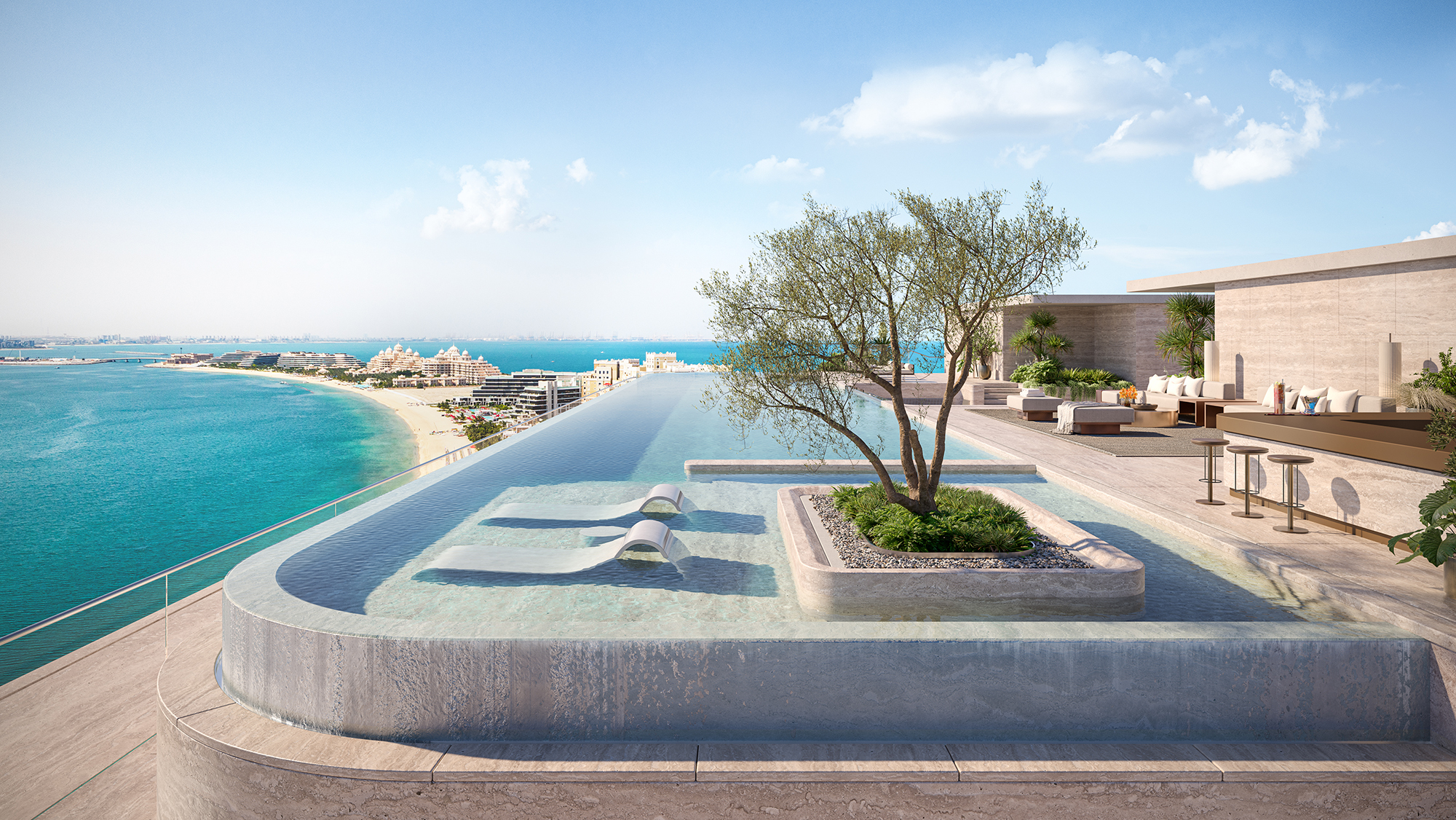Concrete canvas: OMA creates a multi-purpose art space for Alserkal Avenue

Alserkal Avenue – the Dubai arts district filled with galleries, hip eateries, a black box theatre and design shops – was once the site of a marble factory. Now, it's home to Concrete, the first building in the United Arab Emirates designed by the Office for Metropolitan Architecture. When OMA received the commission a few years back, they were given a simple directive: 'To make that space multipurpose, to enable that building to live multiple lives, because today no space serves only one purpose,' recalls Vilma Jurkute, the director of Alserkal Avenue. 'A museum is not just a museum, a gallery is not just a gallery. They all accommodate so many other initiatives as part of their program. The idea was to create that space for Dubai.'
OMA delivered, transforming an existing warehouse into a 1,250 sq m multipurpose venue. 'We took a shape that was already existing, and then we looked at the behavior of what can happen in that building. We focused on that,' said Rem Koolhaas, the co-founder of OMA. Concrete can be used for everything from a museum-quality exhibition to a yoga studio to a concert hall where multiple events can be held at the same time thanks to a series of rotating walls. 'There is four of them and they have the ability to divide the space into two, three, or four and conduct four different events at the same time,' said Iyad Alsaka, the lead architect on the project.

Side exterior view of Concrete in Dubai
Unlike the flashy buildings of Dubai – the most famous being the Burj Khalifa and the Burj Al Arab – Concrete takes a more minimal approach in tune with the architecture of the surrounding warehouses of Alserkal Avenue. 'The development of shape was not a very productive future, and it made the office switch to performance,' said Koolhaas. A translucent double polycarbonate was used for the facade, which features four enormous pivoting walls that double as entryways. The three other exterior walls consist of a sprayed concrete with integrated mirrors for a sparkly finish. 'The front was very intentional; we wanted to achieve a continuation of the inside space to the outside,' said Alsaka. The interiors feature sweeping 8m high ceilings, walls composed of concrete cladding and skylights that bring natural light into the space. Tucked away in the back is a green room that takes the concept quite literally by covering it in green velvet, and prayer rooms.
The space’s inaugural exhibition is 'Syria: Into the Light', a survey of Syrian art presented by the Atassi Foundation, on view until 3 April. 'It’s about showing that the region has art history, has talent,' said Abdelmonem Bin Eisa Alserkal, patron and founder of Alserkal Avenue. Expect to see a myriad of other happenings, exhibitions, talks and concerts over the next few months.
'Over the last decade, Alserkal Avenue has grown and evolved organically with the arts and culture scene of the United Arab Emirates,' said Alserkal. 'The introduction of Concrete marks a new milestone as part of the cultural advancement of the region.'

The commission was to design a multi-purpose art space for Alserkal Avenue

Concrete takes a minimal approach in tune with the architecture of the surrounding warehouses of Alserkal Avenue

Front exterior view of Concrete

A translucent double polycarbonate was used for the facade, which features four enormous pivoting walls that double as entryways

'The front was very intentional; we wanted to achieve a continuation of the inside space to the outside,' says Iyad Alsaka, the lead architect on the project

The space’s inaugural exhibition is 'Syria: Into the Light', an exhibition of Syrian art presented by the Atassi Foundation, on view until 3 April
INFORMATION
For more information, visit the OMA website and the Alserkal Avenue website
ADDRESS
Concrete
1 Street 8
Dubai
Receive our daily digest of inspiration, escapism and design stories from around the world direct to your inbox.
Ann Binlot is a Brooklyn-based freelance writer who covers art, fashion, design, architecture, food, and travel for publications like Wallpaper*, the Wall Street Journal, and Monocle. She is also editor-at-large at Document Journal and Family Style magazines.
-
 New tech dedicated to home health, personal wellness and mapping your metrics
New tech dedicated to home health, personal wellness and mapping your metricsWe round up the latest offerings in the smart health scene, from trackers for every conceivable metric from sugar to sleep, through to therapeutic furniture and ultra intelligent toothbrushes
-
 Out of office: The Wallpaper* editors’ picks of the week
Out of office: The Wallpaper* editors’ picks of the week'Tis the season for eating and drinking, and the Wallpaper* team embraced it wholeheartedly this week. Elsewhere: the best spot in Milan for clothing repairs and outdoor swimming in December
-
 How Stephen Burks Man Made is bringing the story of a centuries-old African textile to an entirely new audience
How Stephen Burks Man Made is bringing the story of a centuries-old African textile to an entirely new audienceAfter researching the time-honoured craft of Kuba cloth, designers Stephen Burks and Malika Leiper have teamed up with Italian company Alpi on a dynamic new product
-
 Zayed National Museum opens as a falcon-winged beacon in Abu Dhabi
Zayed National Museum opens as a falcon-winged beacon in Abu DhabiFoster + Partners’ Zayed National Museum opens on the UAE’s 54th anniversary, paying tribute to the country's founder and its past, present and evolving future
-
 RIBA launches new awards – and for the first winners, we look to the Middle East
RIBA launches new awards – and for the first winners, we look to the Middle EastThe RIBA Middle East Award winners are announced today. The first of the organisation's two new territory awards series honours a women-only mosque, a luxury hotel, a city park and more
-
 Oystra is ZHA’s sculptural vision for living in the United Arab Emirates
Oystra is ZHA’s sculptural vision for living in the United Arab EmiratesMeet the team translating ZHA’s bold concept for the new development into ‘a community elevated by architecture’ – Dewan Architects + Engineers and developer Richmind
-
 A love letter to the panache and beauty of diagrams: OMA/AMO at the Prada Foundation in Venice
A love letter to the panache and beauty of diagrams: OMA/AMO at the Prada Foundation in Venice‘Diagrams’, an exhibition by AMO/OMA, celebrates the powerful visual communication of data as a valuable tool of investigation; we toured the newly opened show in Venice’s Prada Foundation
-
 A Dubai ‘sky palace’ debuts developer Omniyat’s new Bespoke category
A Dubai ‘sky palace’ debuts developer Omniyat’s new Bespoke categoryOmniyat Bespoke, the developer’s new ultra-luxury arm, launches with the Luna Sky Palace penthouse at Orla, Dorchester Collection
-
 NYC's The New Museum announces an OMA-designed extension
NYC's The New Museum announces an OMA-designed extensionOMA partners including Rem Koolhas and Shohei Shigematsu are designing a new building for Manhattan's only dedicated contemporary art museum
-
 Turin’s Museo Egizio gets an OMA makeover for its bicentenary
Turin’s Museo Egizio gets an OMA makeover for its bicentenaryThe Gallery of the Kings at Turin’s Museo Egizio has been inaugurated after being remodelled by OMA, in collaboration with Andrea Tabocchini Architecture
-
 Omniyat launches The Alba, new Zaha Hadid Architects-designed residences in Dubai
Omniyat launches The Alba, new Zaha Hadid Architects-designed residences in DubaiDeveloper Omniyat announces The Alba, ultra-luxury residences managed by Dorchester Collection and designed by Zaha Hadid Architects to blend ‘nature and cutting-edge design’